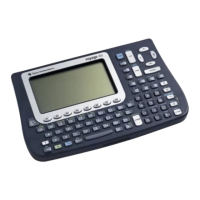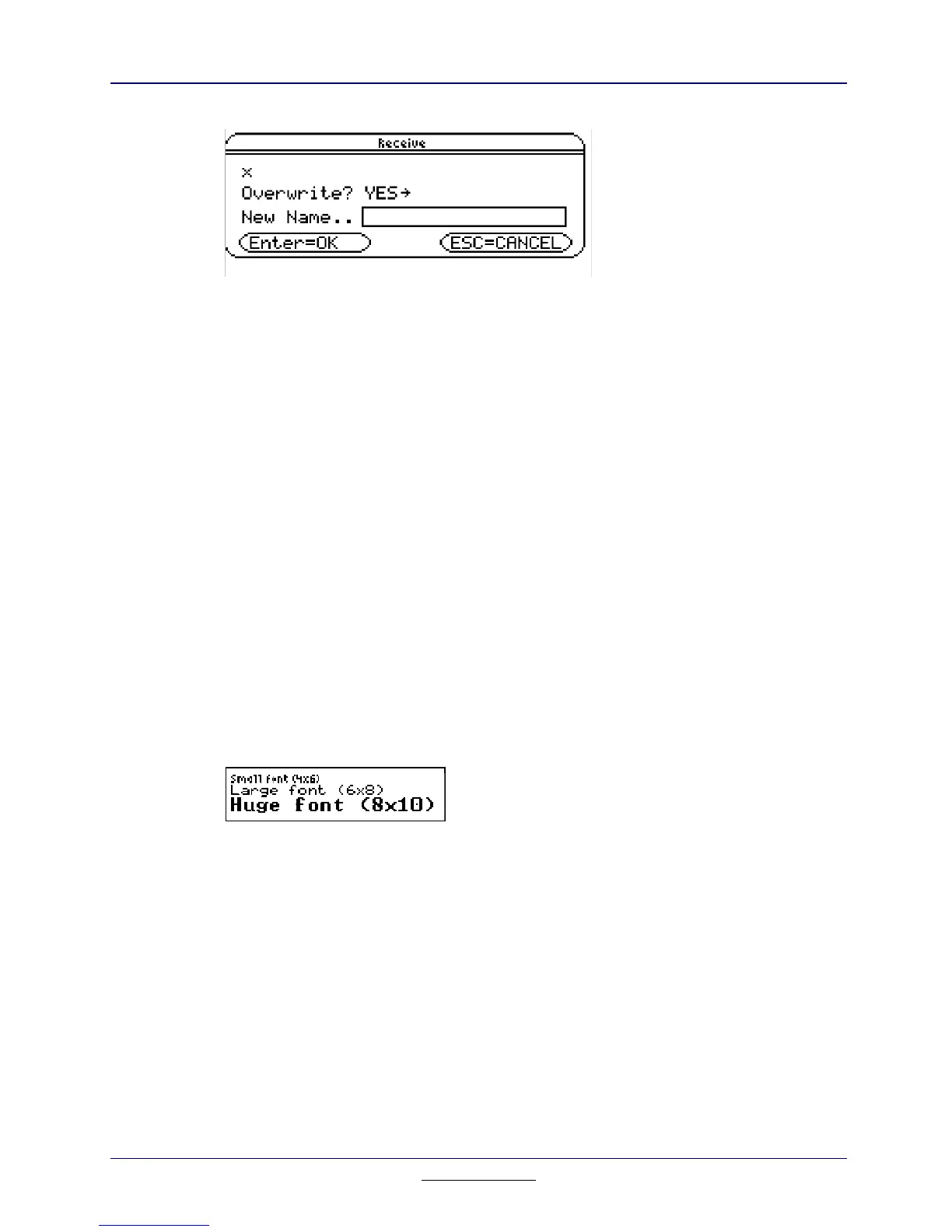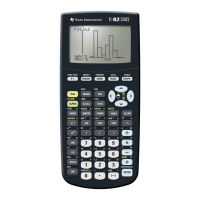Chapter 4: User Interface Overview
19
TI
-
89 / TI
-
92 Plus Developer Guide
Not for Distribution
Beta Version January 26, 2001
Figure 4.5: OverwriteDlg Dialog Box from
Example
This example dialog shown in Figure 4.5 contains text drawn by the caller of the
Dialog
routine (
DF_OWNER_DRAW
), a pop-up defined elsewhere in the
resource file (
OverwritePopup
), an edit field, and a header with two buttons
(which are always placed at the bottom of the dialog box). The symbol
OverwriteCallBack
is a user supplied function that interfaces between the
Dialog
routine and the user code.
4.4. Fonts
There are three fonts used in the AMS: Small (F_4x6), Large (F_6x8), and Huge
(F_8x10). The Small font is used in the status bar and dialog box headers. The
Small font is also used in the dialog boxes and toolbars on the TI
-
89. Some of
the Small font characters, especially the international characters, are difficult to
distinguish from each other and so care should be exercised when using the
Small font. The Large font is used almost everywhere else, except in authoring
lines on the TI
-
92 Plus, which uses the Huge font. Figure 4.6 displays the three
different fonts.
Figure 4.6: AMS Fonts
An app can control which of the three system fonts it uses in its own windows.
Characters are drawn to the display based on the character attribute selected.
The character attribute affects how the background and foreground pixels for a
character are handled. This is shown in the following table.

